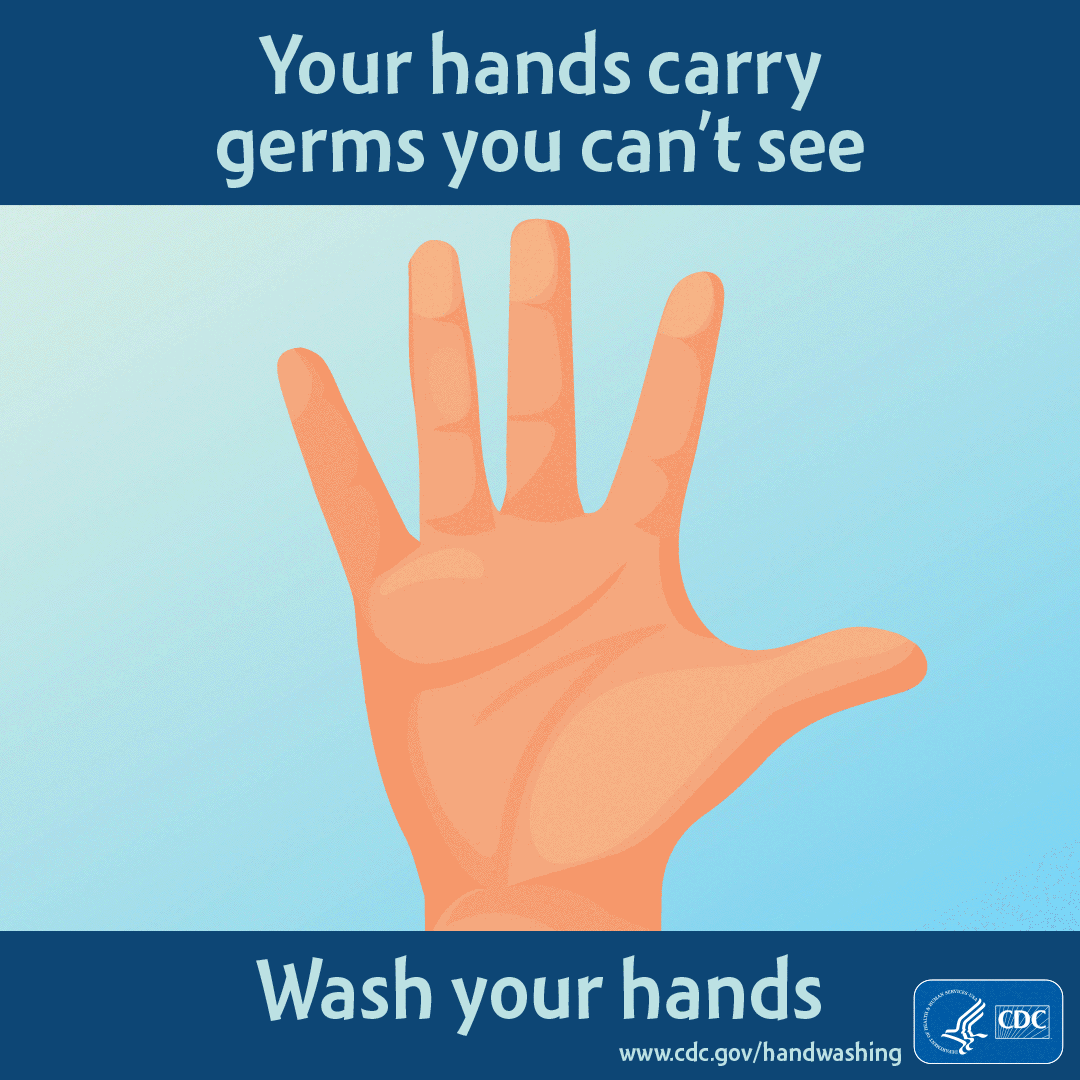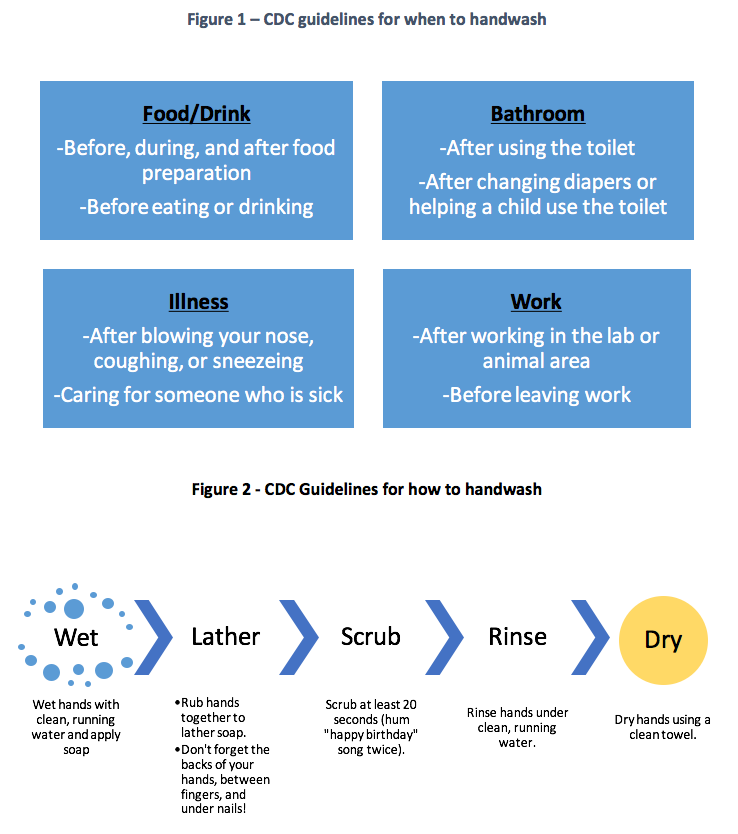 Good handwashing technique is important to prevent the spread of germs. Think about everything that you touch from the moment you wake up, come to work, and go home.
Good handwashing technique is important to prevent the spread of germs. Think about everything that you touch from the moment you wake up, come to work, and go home.
Your hands may have come into contact with germs doing your daily activities.
If you conduct research activities:
- wash hands after entering and before exiting the laboratory
- prior to and immediately after handling microorganisms
- immediately after removal of gloves in the lab
Check out this APIC film festival winning video that shows a day in the life of a hand. While the video chronicles hands from a healthcare perspective, the context is applicable to everyone:
https://www.youtube.com/watch?v=7ZMFdll8xxk&feature=youtu.be
Cleaning hands with soap and water is the preferred method to prevent the spread of germs. When soap and water are unavailable, alcohol-based sanitizers can also be used. Alcohol sanitizers must contain at least 60% alcohol to be effective. Yet, hand sanitizers are not a substitute for handwashing.
The CDC has multiple resources to teach us when (Figure 1 below) and how (Figure 2 below) to wash our hands. Do you need a demonstration on handwashing? Head over to the CDC website for this video: Fight Germs. Wash Your Hands!
So what do you gain from handwashing?
Reducing the spread of germs to others!
Preventing the spread of infection, such as diarrhea and respiratory illnesses!
Staying healthy!
Preventing the overuse of antibiotics!

Leave a Reply